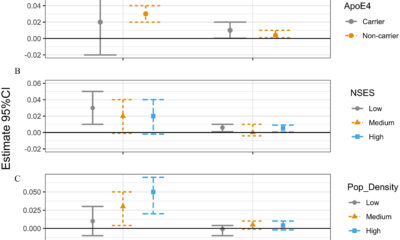Finance
A bit of economics of living and dying

Nothing is more banal than dying. Being born is much more difficult. Over the course of 200,000 years of human history, this has been the case estimated that 109 billion people died, compared to 8 billion now alive. So about 7% of the people who have ever lived are alive now. But they will die too: c’est la vie.
The graph below shows that the human population continued until about 2000 B.C. was stable. From 2000 BCE the population grew slowly until around the 17th century, with some catastrophes along the way such as the Black Death of the 14th century, which probably killed a third of Europeans. Then, unexpectedly, the population exploded from the 18th and 19th centuries (you can play with the graph on the website of Our World in Data). In 1820, life expectancy at birth in Western Europe and Japan was 36 years; the average was still just 24 in the rest of the world, the same level as everywhere on Earth around the year 1000. In the United Kingdom it was 40 years in 1820, and by 1999 it had grown to 77 years.
The Industrial Revolutionwhich caused incomes (GDP per capita) to rise sharply, played a role in supporting and fueling the population explosion. As Angus Maddison noted: “There has been significant similarity over time and across regions in the patterns of improvement in per capita income and life expectancy. [expectancy].” (See Angus Maddison, The global economyOrganization for Economic Co-operation and Development, 2003, 2006.)
We’ve met Angus Maddison before when we looked at his estimates GDP per capita since the first year and the astonishing increase in trend during the Industrial Revolution. Increasing GDP per capita requires total output (GDP) to increase more than population. This growth phenomenon, which had never occurred before it started in the Netherlands and Great Britain, requires institutions that do not hinder the free market and entrepreneurship. In the late 18th and early 19th centuries, ordinary people’s constant fear of starvation was abolished in countries participating in the Industrial Revolution. Many countries with weak industrial revolutions were able to partially benefit from those of others through trade.
Note that the Industrial Revolution was not just a matter of factories, even though the mass production of ordinary consumer goods for ordinary people, such as clothing and everyday objects and tools, was an important step and a great achievement. But it was preceded and accompanied by one financial revolutionnot to mention the foregoing centuries of trade (even though this is often stopped by political rulers). Without this institutional background, widespread technological progress cannot occur. An entire industrial civilization was born, which also led to great advances in agriculture and intangible services. Today in America, two-thirds of consumer spending goes on services – such as education, health care, housing, home delivery and the like – rather than on food and hard goods. Consumers now mainly want services because food and manufactured gadgets cost so little.
As my post “The Meaning of Failed Industrial Revolutions” also pointed out, some industrial revolutions started but failed, and in some countries nothing ever came close. For us in Western countries (plus a few Asian countries), the future depends on our ability to strengthen the institutions that made the Industrial Revolution possible. Ortega and Gasset warned us that civilization – industrial civilization – is not guaranteed against political folly.
Another lesson concerns the environmental problems of the 1960s and 1970s in the form of “the population bomb,” the title of a book by Stanford University biologist Paul Ehrlich. Environmentalists advocated large-scale state dirigism to control the population and save humanity. In 1965 the New Republic announced that the “world’s population has outpaced its food supply,” that “famine had begun,” and that world hunger would be “the single most important event in the last third of the 20th century.” In reality, the last third of the 20th century brought about a historic decline in world poverty. The “freedom to reproduce is intolerable,” ecologist and microbiologist Garrett Hardin pontificated. Economist Julian Simon argued to Ehrlich that humans are “the ultimate resource,” title of his 1981 book: More individuals on our planet are not a problem, but on the contrary make more contributors to the solution of humanity’s problems – in addition to each individual is separate. a life worth living. Simon made and won a famous bet with Ehrlich over the depletion of resources. The story is told in Paul Sabin’s The Bet: Paul Ehrlich, Julian Simon and our guess about the future of the Earth (2013); If you don’t have time to read the whole book, you might like this my short review about law and freedom.
We can rephrase the issue in terms of so-called ‘carrying capacity’. National Geographic defines it as
the average population size of a species in a given habitat. The species’ population size is limited by environmental factors such as adequate food, shelter, water and mates. If these needs are not met, the population will decline until resources recover.
Applied to Homo Sapiens, this Malthusian approach ignores the crucial fact that human individuals want more than “adequate food, shelter, water, and mates,” and are indeed capable, with the right institutions, of obtaining much more. The Encyclopedia Britannica adds “social requirements” to the conditions for capacity, although the term “requirements” seems to limit the scope of voluntary social cooperation:
carrying capacitythe average population density or population size of a species below which numbers tend to increase and above which numbers decrease due to resource shortages. Carrying capacity is different for each species in a habitat due to that species’ specific food, shelter and social needs.
Economics helps us understand how today’s living people came to account for 7% of all those who have lived in 200,000 years. It also allows us to look at the fears of environmentalists and other social issues with a cool head.













